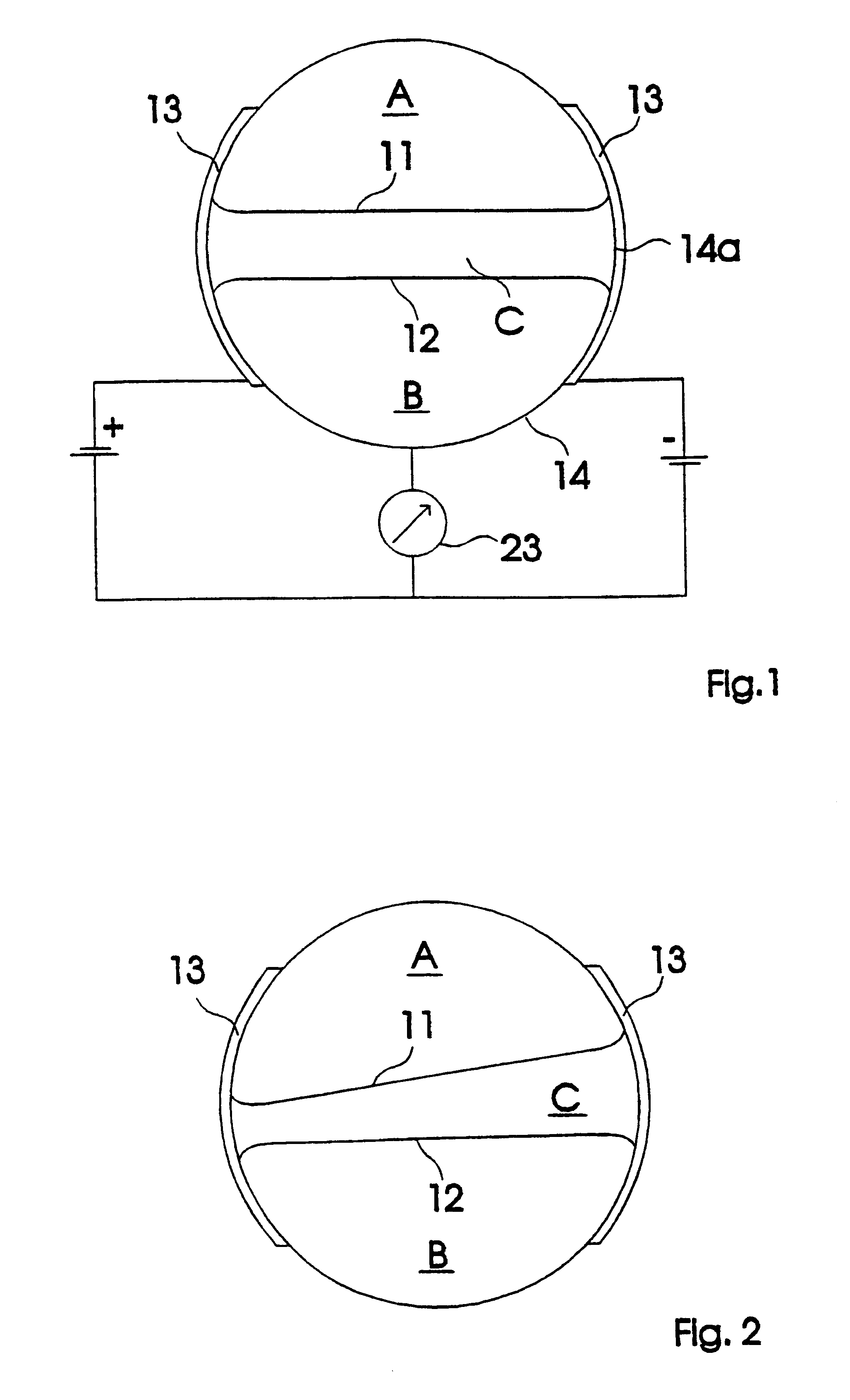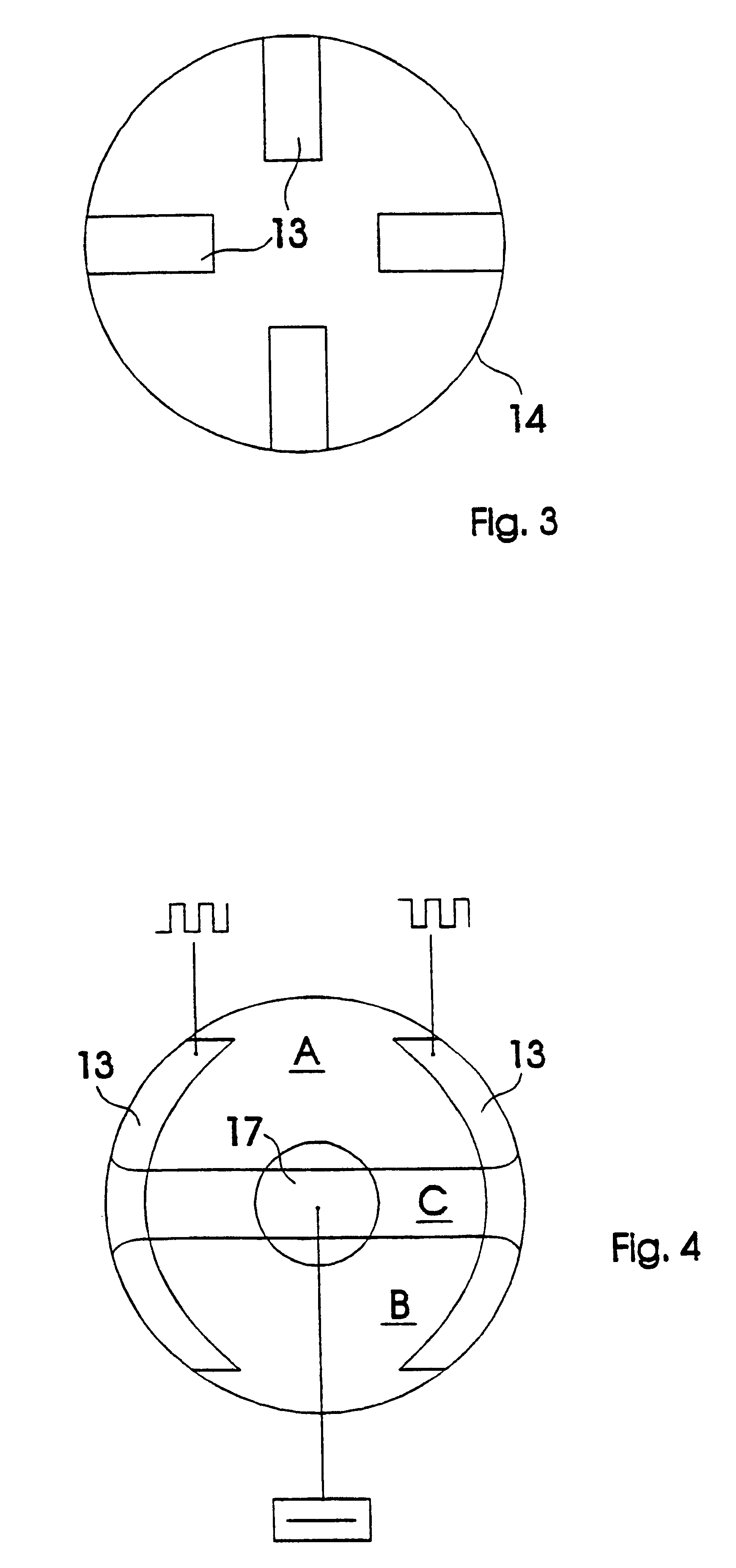Acceleration sensor for detecting inertia forces
a technology of acceleration sensor and inertia force, which is applied in the direction of acceleration measurement, measurement devices, instruments, etc., can solve the problems of inability to interrogate the measuring section, inability to reliably determine the low deceleration value, and sensor is not capable of separating dynamic positional change from static positional change of phase boundary
- Summary
- Abstract
- Description
- Claims
- Application Information
AI Technical Summary
Problems solved by technology
Method used
Image
Examples
Embodiment Construction
The invention is explained further below by means of specific embodiments shown in the drawings. It is self-evident that these specific embodiments are not to be considered as an exhaustive enumeration and that the physical concept is not to be limited to the principle shown in the drawings.
An accelerometer 10 (FIG. 8) for detecting inertial forces is shown in the figures.
In the first specific embodiments of FIGS. 1-7, several media form at least two phase boundaries, which also behave dynamically differently in the case of the appearance of acceleration because of the different physical properties of the media. In the second specific embodiment of FIG. 9, it is possible to operate with only one phase boundary between two media A, B, since here the dynamic influences are leveled after their detection by the detection means 13 by means of a time constant Z. Thus, in all specific embodiments, there are differentiation means acting time-dependently, once in the form of the different me...
PUM
 Login to View More
Login to View More Abstract
Description
Claims
Application Information
 Login to View More
Login to View More - R&D
- Intellectual Property
- Life Sciences
- Materials
- Tech Scout
- Unparalleled Data Quality
- Higher Quality Content
- 60% Fewer Hallucinations
Browse by: Latest US Patents, China's latest patents, Technical Efficacy Thesaurus, Application Domain, Technology Topic, Popular Technical Reports.
© 2025 PatSnap. All rights reserved.Legal|Privacy policy|Modern Slavery Act Transparency Statement|Sitemap|About US| Contact US: help@patsnap.com



